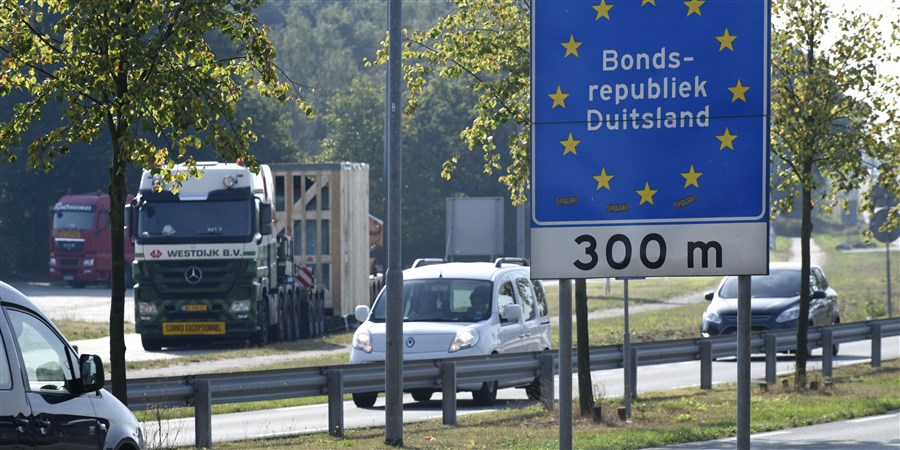Dutch importers bought in the period from January to August 2020 for 275.5 billion euros of goods abroad, 9.4 percent less than a year earlier. At the same time, exports of goods fell 8.4 percent to 310.6 billion euro, leaving the trade surplus practically unchanged.
| 2019 | 339.2 | 304.1 | 35.1 |
|---|---|---|---|
| 2020 | 310.6 | 275.5 | 35.1 |
Lower oil and gas trade deficit
The Netherlands is a net importer of mineral fuels such as oil and gas. From January to August 2020, the Netherlands, as an importer and exporter of these fuels, had to deal with lower demand and lower commercial prices. As a result, the mineral fuels trade deficit widened compared to the same period in 2019. 3 billion more favorable euros. The trade balance received a positive boost from the increased export of medical products. More chemicals were exported and fewer imported, increasing trade in chemicals 19 billion euros donated, 500 million euros more than a year before.
| Chemical products | 19.2 | 18.7 |
|---|---|---|
| Food and drinks | 15.2 | 15.5 |
| Raw materials and natural products |
3.5 | 5.0 |
| Machines | 2.4 | 2.7 |
| Manufacture | -1.2 | -0.5 |
| Transport equipment | -1.4 | -0.7 |
| Mineral fuels | -2.5 | -5.6 |
Trade surplus mainly with EU countries
In the months of January to August 2020, the trade surplus with countries of the European Union (excluding the United Kingdom) was 61.8 billion euros. That is to say 6.8 billion euros (10 percent) less than a year before. Trade with Germany yielded the most money. In the first eight months of this year, the trade surplus with Germany was 21.8 billion euro, 2.7 billion euros less than a year before. Despite a drop in imports of more than 4000000000 euro, the German share of our imports increased to 17.5 percent (+0.3 percentage points). During this period, the export of oil and gas to Germany 5.2 billion euros less. Germany’s interest in our exports remained stable at approximately 22.5 percent.
| Germany | 21.8 | 24.5 |
|---|---|---|
| France | 14 | 15.3 |
| United Kingdom | 8.7 | 10.1 |
| Belgium | 4.9 | 5.1 |
| Italy | 4.7 | 5.8 |
| Spain | 3.6 | 4.3 |
| Poland | 3.4 | 2.7 |
| Switzerland | 2.9 | 2.6 |
Trade deficit mainly outside the EU
The Netherlands imports far more goods than they export from countries outside the EU. The trade deficit with these countries ranged from January to August 2020 26.7 billion euros. This deficiency is 6.8 billion euros less than last year. The Netherlands has the largest trade deficit with China, 19.6 billion euros. That’s spacious 300 million euros less than in January to August 2019. This is because more than 1.1 billion the euro is exported more and more than 800 million euros more is imported. After China, the Netherlands has the largest trade deficit with the United States. This deficit remained stable in 6.4 billion euro.
The trade deficit with Russia was the one that decreased the most. In the period from January to August 2019, the Netherlands still had a trade deficit of 7.4 billion euros with Russia. Due to lower oil and gas imports, the trade deficit with Russia narrowed in 2020 2.1 billion euros. Russia’s share of our imports has fallen from 3.7 percent to 2.2 percent. Of the eight countries with which the Netherlands has the largest trade deficit, seven are not members of the EU.
| porcelain | -19.6 | -19.9 |
|---|---|---|
| USA | -6.4 | -6.4 |
| Malaysia | -4.1 | -3.8 |
| Vietnam | -3.3 | -2.9 |
| Ireland | -3 | -3.1 |
| Norway | -2.5 | -5.3 |
| Hong Kong | -2.1 | -2.5 |
| Russia | -2.1 | -7.4 |
You can find an overview of Dutch imports and exports and the most important trading partners in the new international trade fact sheet.

“Professional food trailblazer. Devoted communicator. Friendly writer. Avid problem solver. Tv aficionado. Lifelong social media fanatic.”







